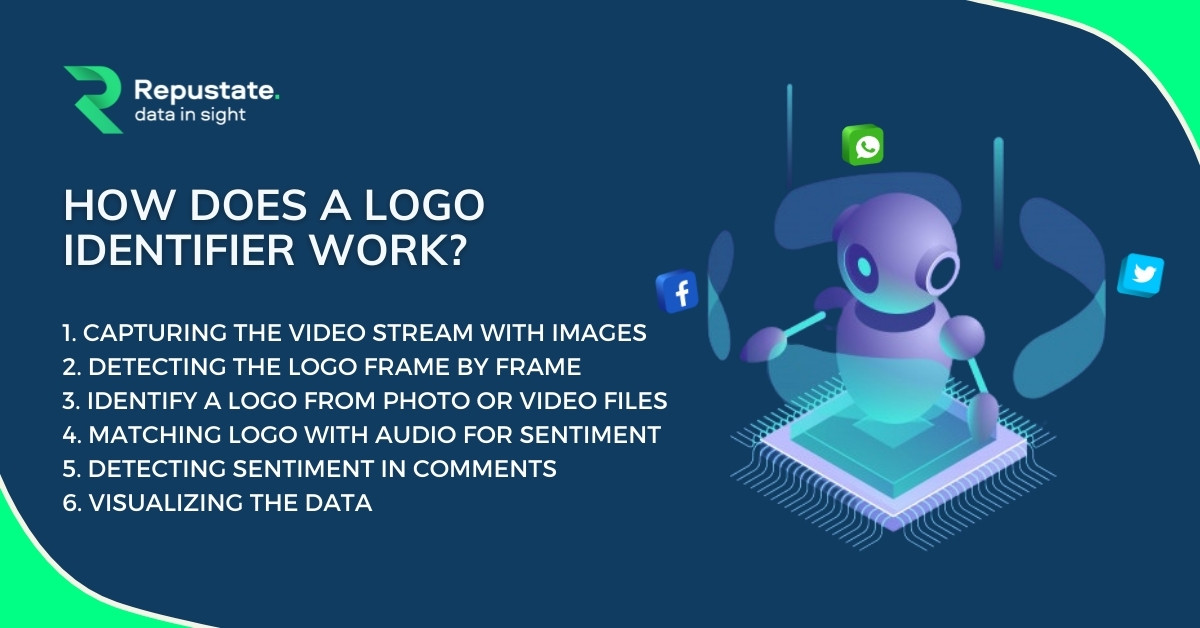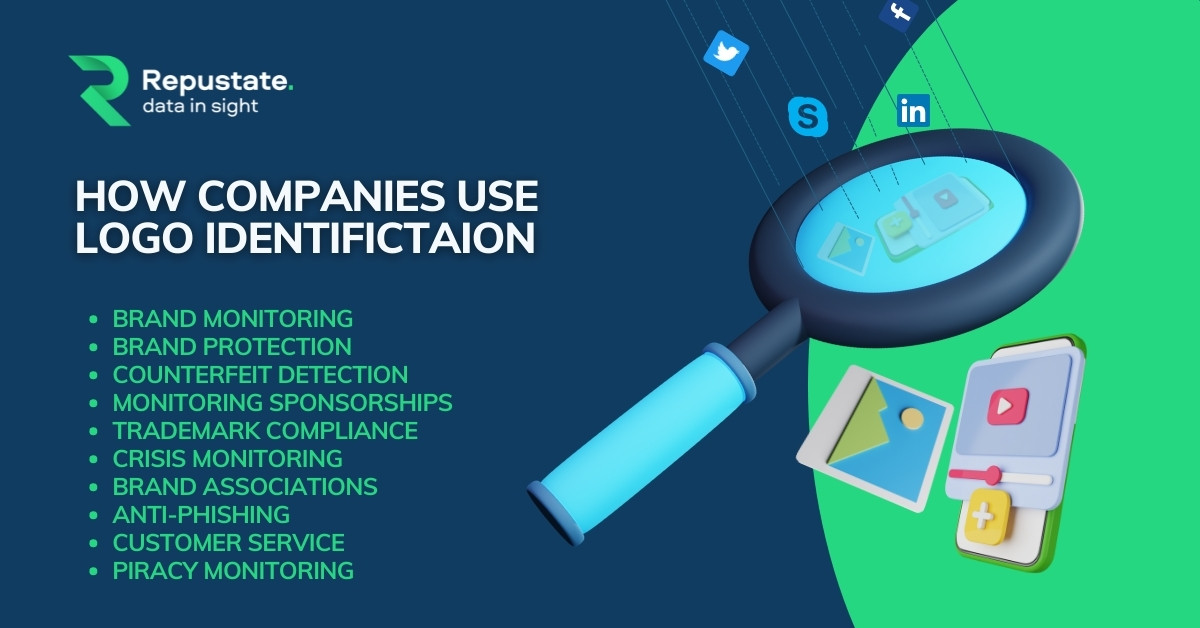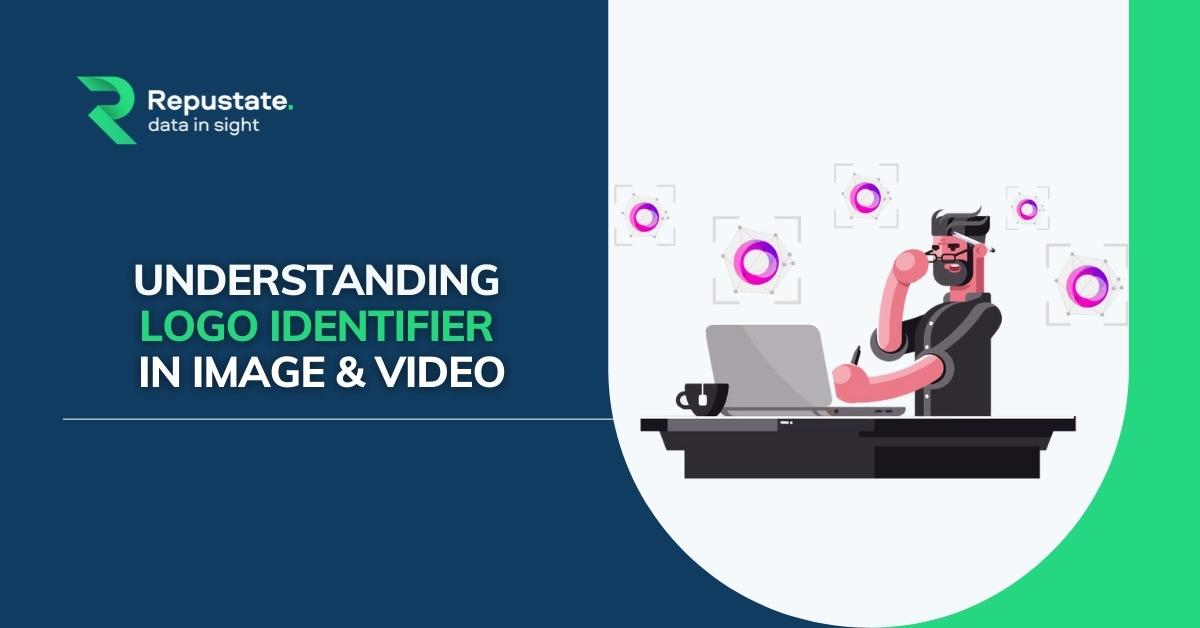Understanding Logo Identifier in Image & Video: How It Works With Applications
A logo identifier is a very important capability that businesses need to have in their text analytics and sentiment analysis platform for understanding customer behaviour and needs. With brands using video-sharing sites to a much greater degree than earlier, it is important to keep a tab on who is using your logo and if so, to what effect. Moreover, as customers share their feedback and opinions about products or customer service online, oftentimes their user-generated videos contain brand logos. All these reasons make it necessary to identify a logo from photo or video files and comments on social media and video libraries for brand monitoring and social listening. A logo identifier allows businesses to do this.
In this post, we’ll look at how the capability works and how you can benefit from it.
How Does A Logo Identifier Work?
In order to identify a logo from photo or video files from any sort of voice of the customer data, it’s important to use a sentiment analysis API that has such a capability. This is an important consideration when you are in the market for emotion mining platforms because not all of them have a logo identifier.
A machine learning-based logo identifier follows a series of steps during which it analyzes the content, detects any logos, and identifies them. Video data is analyzed with more scrutiny because a video will first need to be separated into the distinct images that make up its every frame. For this, video content analysis is used.
Considering this, the six steps necessary for a logo identifier to identify a logo from photo and video files are:

1. Capturing the video stream with images
The first step in the process is capturing the images in the video data. Typically, this can be done either by using a locally stored video or, in the case of social media and video platforms, uploading the URL of the video to the sentiment analysis platform.
2. Detecting the logo frame by frame
In this step, the the sentiment analysis API will capture every frame of the video as an image. During this process, logo recognition is enabled by using a single shot multibox detector which, in turn, uses a deep neural network to detect objects in images.
3. Identify a logo from photo or video files
During the next step, the machine learning platform identifies the logos that were detected by the logo identifier during the previous stage. It does this by comparing the detected logos to categorized logos in a pre-trained machine learning model. This model would have been trained on a brand’s specific logos, competitor logos, and other logos relevant to the brand, all of which are properly labeled and annotated.
The platform’s neural networks and knowledge graph make sure that logos are also recognized semantically and contextually. This is very useful because many times, the social post may not directly mention your brand logo but have a competitor logo instead. A knowledge graph helps the platform understand how a logo different from yours may be contextually related to you.
4. Matching the logo with audio for sentiment detection
Once all the logos have been detected and identified as described above, the API will, in the case of video, convert the audio to text. Then the text analytics process extracts the topics and aspects from the data using natural language processing (NLP), sentiment analysis, and semantic analysis. In effect, this enables search inside video. Search inside video makes it possible for you to search for any video in a repository using keywords or themes and descriptions.
5. Detecting the sentiment in comments
The machine learning platform will apply sentiment analysis on all the data including comments, images, and videos. This includes the data collected by the logo identifier.
6. Visualizing the data
After the analysis is complete, the API will display the insights gathered on its text analytics dashboard. In this way, it’s easy to see all the topics and aspects identified, as well as the surrounding sentiment.
Why Do Companies Need To Identify Logos From Photos And Videos?
Using a logo identifier to identify logos in images and videos on any online channel gives you an invaluable edge over several areas. There are many key use cases where businesses benefit from it, as you will see below.

1. Brand Monitoring
First and foremost, a logo identifier is extremely helpful when it comes to social listening and brand monitoring. It can give you strategic TikTok insights or help you monitor social media channels like Instagram. It also allows you to monitor product review websites, news magazines, websites, or blogs, etc. where their products and brands are discussed or mentioned. This gives you deep insights into your market perception and customers’ opinions about their products. This is especially helpful where, for instance, a video discusses a product without expressly mentioning the product’s name.
2. Brand Protection
Logos are often used by a business’s partners, suppliers, and the like on their websites and promotional material. Using a logo identifier will enable businesses to identify these instances and give them the opportunity to establish whether the logos are used according to brand guidelines. It also allows them to prevent the use of their logo by those third parties who are unauthorized to do so. This is a serious litigious scenario and you can take several measures to ensure that the guilty party is held accountable.
3. Counterfeit Detection
Counterfeit products are becoming more and more of an issue for businesses around the world. The increased sales of these fake products not only impact the sales of businesses who sell the original goods but could also impact the reputation of a manufacturer or resellers when a customer buys a low-quality product. Further compounding the problem are e-commerce sites, which make it easy for unscrupulous sellers to market and sell counterfeit products without dealing with customers in person.
4. Monitoring Sponsorships
To date, determining the return on investment on sports and other event sponsorships has been challenging to determine. With logo recognition, businesses can see how their logos feature in images, videos, and social media posts shared about the specific event. As a result, they can measure their exposure and determine whether sponsorship is giving them the dividends they expected.
5. Trademark Compliance
In a sense related to counterfeiting, bad actors often use the logos and trademarks of other businesses to promote and sell their products on social media and websites like eBay, Etsy, and others. A logo identifier eliminates the complexity in searching for these instances and can help businesses identify any infringements of their trademarks and other intellectual property. By making it easier to find any infringements, businesses can act quicker through legal actions and strategize on preventative measures.
6. Crisis Monitoring
Because a logo identifier can identify a logo from photos or any social media data like community posts, videos, or news items, it allows a business to detect any negative mention that has its logo. When you’re able to detect these instances early on, you can take the necessary action to deal with the issue more effectively before it becomes a larger, more significant, problem.
7. Brand Associations
Product reviews can be extremely helpful to show businesses how their customers feel about their products. Taking this one step further, seeing how customers use a product or the events they associate it with can provide a wealth of insights into the buyer’s mind and see how they perceive your product. A very good example of this is how the 150-year old beauty brand Ponds, owned by Unilever, rebranded itself into a new edgier self to compete with brands such as L’Oreal and Revlon that had started making a foray into its well-established territory.
8. Anti-Phishing
Phishing is one of the main methods cybercriminals use to perpetrate cybercrime. This is because, to the unwary, an email can easily seem legitimate and convince them to share their or their employer’s data. A logo identifier can help businesses prevent this, as it’s able to identify spoofed logos on websites and in emails.
9. Customer Service
With social media’s immense popularity, it’s understandable that customers will share images, with accompanying mentions and comments about products. A logo identifier helps you keep a tab on such posts, both good and bad, without needing to search for specific keywords, so you can act in a timely manner. Proactively attending to customer grievances by being able to identify a logo from photo and video files gives businesses a wider view of how to improve their customer experience and build a more engaging relationship.
10. Piracy Monitoring
Content piracy is practically impossible to prevent because of the sheer amount of content being made available through illegal video and file-sharing sites. Here, a logo identifier offers a solution. It’s able to analyze vast amounts of video content and identify a logo from photos like thumbnails or from the video itself. This allows copyright holders to detect unsolicited use of their content.
In Summary
The ability to identify a logo from photo or video files can be extremely valuable for businesses that want to know what their customers’ opinions are and to protect their brand and reputation. However, to be able to do this, businesses need the right platform with an efficient sentiment analysis API that comes pre-built with a logo identifier.
 Home
Home
 Jan 14, 2022
Jan 14, 2022

 Jeremy Wemple
Jeremy Wemple
 Dr. Ayman Abdelazem
Dr. Ayman Abdelazem
 Dr. Salah Alnajem, PhD
Dr. Salah Alnajem, PhD
 David Allen
David Allen

 Repustate Team
Repustate Team

